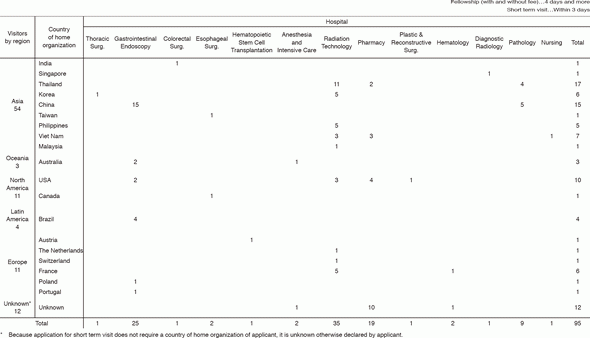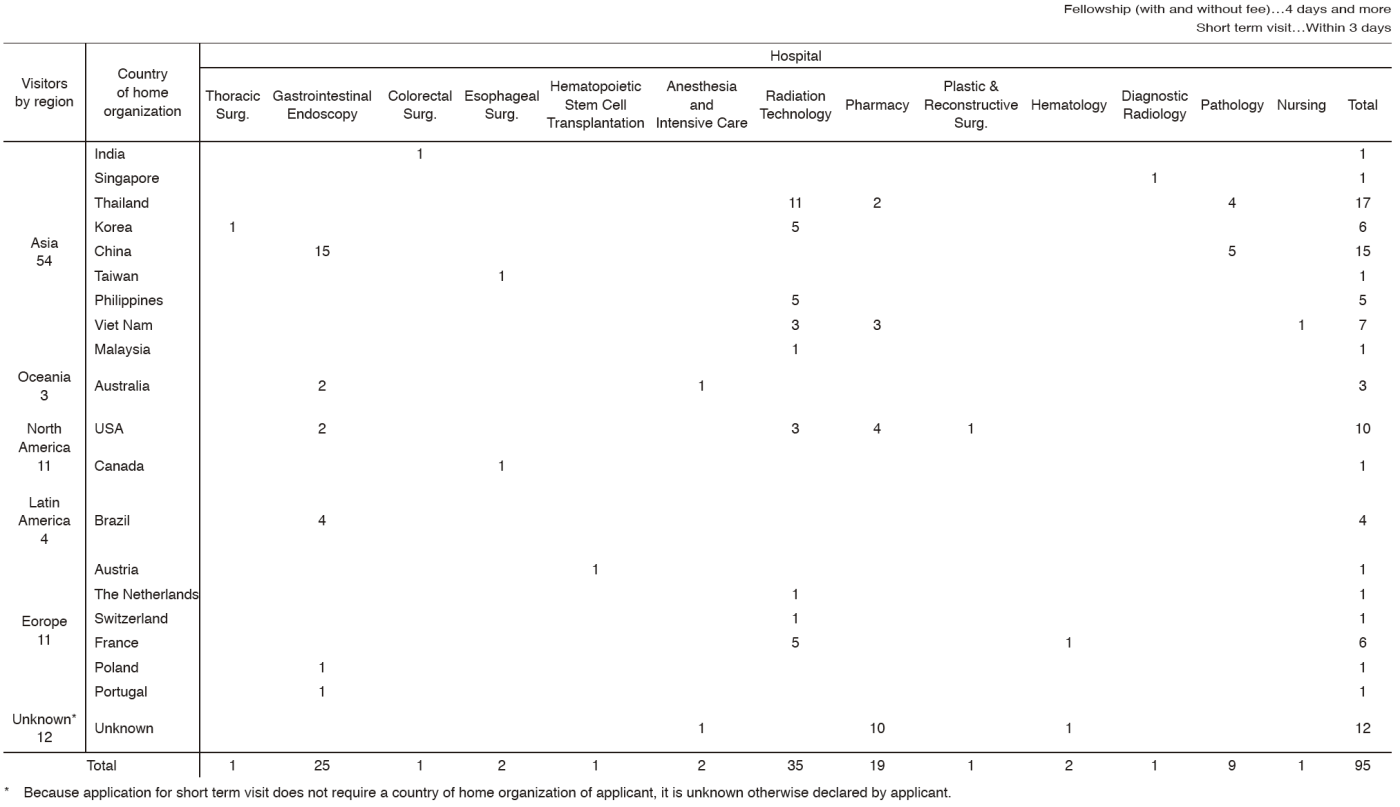HOME > Publication & Reports > Annual Report 2016 > Sections Directed by President
Strategic Planning Bureau Director-General
I. Office of Policy
Toshio Miyata
Introduction
The promotion of clinical epidemiology
Our team and what we do
Supporting the society for clinical epidemiology.
Research activities
Health Policy
Education
Education of clinical epidemiology
Future prospects
The Japanese government fosters pharmaceutical and medical devices that can contribute to Japan's economic growth and global public health with the third arrow of "Abenomics". Two acts, such as the act on the promotion of healthcare policy, and the act on the independent administrative agency for medical research and development, were passed in 2014. The AMED (Japan Agency for Medical Research and Development) ensures the most suitable research funds for academia or hospitals from 2015. At the same time, the MHLW (Ministry of Health, Labour and Welfare) started a drastic reform of the health care system for promoting the community health care system and saving the sustainability of the universal health coverage system. I supported the building of the society for clinical epidemiology to reform the governmental health policy by the big clinical data and new evidence.
II. Office of Public Relations
Hiroshi Nokihara, Miyako Horikoshi, Toru Kishida, Hanako Tsunakawa, Yumi Kitada, Naoto Gotohda, Rey Yoshida, Kaori Nishihara, Hirokazu Watanabe
Introduction
The Office of Public Relations has been organized as one branch of the Strategic Planning Bureau, which was assigned as a public section under the supervision of the president of the National Cancer Center (NCC) in April 2013. A full-time staff member was newly assigned to the Office of Public Relation in April 2014. Our task is to manage the NCC homepage (https://www.ncc.go.jp/), publication of reports, and coverage and delivery of press conferences and press releases. By sharing the mission and vision between staff members throughout the NCC, we provide information about NCC's most outstanding activities in cancer care, research, screening, prevention, and policy making.
Our team and what we do
During weekly meetings of the Office of Public Relation, we performed prompt decision making regarding the public relations policy and shared information about our tasks by using a TV conference system between Tsukiji and Kashiwa campuses. We received information on the publicity work from each department, and drafted a publication plan. Also, by the distribution of the intramural information for staff members in the NCC, we shared vital messages via e-mail, bulletin board, and/or information magazine to facilitate communication between staff and executives. We distributed information promptly by publishing and sharing press releases, press conferences and seminars about novel treatment, research activity, and notable accomplishments within the NCC and elsewhere.
-Homepage improvement and updates
-Public information magazine "hibiho": for patients in the NCC Hospital (NCCH) and the NCC Hospital East (NCCHE)
-Public information magazine "The National Cancer Center News": for external hospitals, academia, research institutions, and administrative agencies
-Intramural information brochure "Challenge": for staff members and their families in the NCCH
-Support for events, seminars, and public information
-Media support at press conferences, press releases, and media coverage
We held 11 press conferences (the Center for Cancer Registries established within the Center for Cancer Control and Information Services (CIS), the Department of Genetic Medicine and Services established within the NCCH, etc.) and published 43 press releases.
Future prospects
We proceeded with the preparations for a renewal of the NCC homepage into a more attractive, informative, and accessible page for users to inform NCC's activities in cancer care, research, screening, prevention, and policy making. We also feel it is important to move forward public relations activities towards expansion to overseas media via our homepage and press releases. We hope that all staff members in the NCC share their information and thoughts, and will move in the same direction to execute NCC's mission.
III. Office of International Affairs
Seiichiro Yamamoto, Sakiko Suzuki, Mitsuko Otani, Kimiko Oka
What we do
The National Cancer Center (NCC)'s international affairs are mainly promoted through:
1)Personnel exchanges with leading medical institutions around the world, nurturing cancer researchers / healthcare professionals, and further build on a global network,
2)Participation in international collaborative cancer research projects, and outreach to the international medical community,
3)Sharing our medical expertise and information with overseas colleagues, with a focus on Asia, thus leading the advancement of cancer care in the region.
The Office of International Affairs serves as a conduit to, and supports the abovementioned activities.
1.Collaboration with International Agencies and Nurturing Human Resources
This year, we posted a researcher specializing in epidemiology and prevention to the US National Cancer Institute (NCI), as part of the collaborative MOU scheme. The focus was on research funding into the U.S. cancer-related public health research scene, and on establishing a platform for future collaboration.
We also signed a memorandum of understanding (MOU) with the National Cancer Research Institute (NCRI) of the United Kingdom, to implement and expand collaborative activities. We look forward to gaining insight into cancer clinical research systems in the UK, and thus strengthening and developing, and also promoting active patient engagement in the clinical trials system in Japan. At the US, Japan, and Korea trilateral cancer moonshot initiative meeting of ministers and health experts hosted by the then US Vice President Joe Biden, New York in September 2016, the NCC President and Research Institute Director took part.
2.Collaborative Medical Research
The NCC continues its participation in multiple international collaborative research programs and international clinical trials. More details can be found on sections of the respective teams.
3.Medical Contribution, with a focus on Asia
We continue to host medical staff on visiting fellowship visits to our two campuses, as we have since the establishment of our center. In 2016, we hosted a total of 180 long term doctors/medical staff, an annual growth by a score. To top this, short term visitors (less than three days) amounted to 106 (please see Table 1). In addition, we had visitors exceeding 500, including the WHO Regional Directors, and the Russian Healthcare Minister.
We keep in touch with, and nurture a network of fellowship alumni. As a novel project, we also produced a pocket-sized fact card to strengthen our outreach to visitors and to the general public.
The NCC also participated in the biannual Asian National Cancer Centers Alliance (ANCCA) meeting held in Mongolia. The NCC President shared anti-cancer policies in Japan, and participated in discussions towards building a stronger alliance.
Table 1. January - December, 2016 Visiting fellows (with and without fee) and Short term (within 3 days) visitors


Table 2. January - December, 2016 Visiting fellows (with and without fee) of the Hospital
Fellowship (with and without fee)...4 days and more
Short term visit...Within 3 days


* Total number by division (Some visitors rotate Multiple divisions).
** An Vietnamese citizen, enrolled in a university in Japan, is counted as Viet Nam because he may return to his home country one day.
*** An Australian citizen, working in Japan, is counted as Australia because he may return to his home country one day.
Table 3. January - December, 2016 Visiting fellows (with and without fee) of all centers except the Hospital
Fellowship (with and without fee)...4 days and more
Short term visit...Within 3 days


* Total number by division (Some visitors rotate multiple divisions).
** A Malaysia citizen, enrolled in a university in Japan.
Table 4. January - December, 2016 Short term (within 3 days) visitors of the Hospital
Fellowship (with and without fee)...4 days and more
Short term visit...Within 3 days


*Because application for short term visit does not require a country of home organization of applicant, it is unknown otherwise declared by applicant.
Table 5. January - December, 2016 Short term (within 3 days) visitors of all centers except the Hospital


